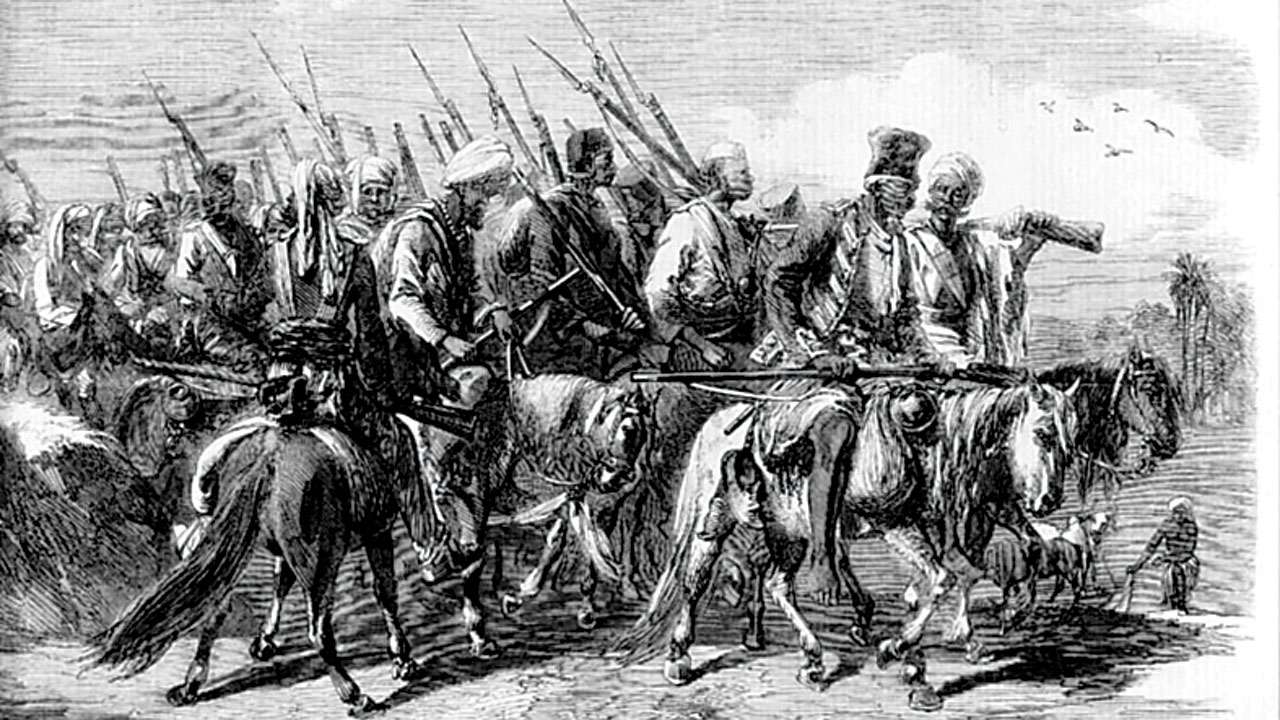
The Great Indian Rebellion, lasting from May 1857 to July 1859, was not uniform in scope or strength. A dozen rebellions erupted at different regions at various points in time, with varying levels of vigour and efficacy. The rebellion in Central India, commencing after the rebellion subsided in the north, is mostly remembered for Rani Lakshmibai of Jhansi, who fell fighting in Gwalior, on June 17, 1858. However, the Central Indian rebellion did not end there. It continued under the brilliant Tatya Tope, a rebel leader whom the British soon recognised as a supreme threat. This court official, who possessed no military experience before the rebellion, outfoxed the British many times before falling to treachery.
Tatya Tope was born Ramchandra Panduranga Yewlekar, into a Deshastha Brahmin family, in a village in the Maratha dominion, in 1814. “Tatya” was a childhood nickname and “Tope” was a moniker he earned as a young official in Nana Saheb’s estate. This “court in exile” was in Bithoor near Kanpur, where Nana Saheb’s adoptive father, Peshwa Bajirao II, was exiled following Maratha defeat in the Anglo-Maratha Wars. Tatya Tope was at the forefront with Nana Saheb when the rebellion erupted in Awadh in June 1857. Despite initial victories, the rebels were ultimately no match for the British Army in the northern plains. By end of 1857, the British brutally subdued Delhi and Awadh. Nana Saheb fled to Nepal where he soon disappeared. Tatya and Nana Saheb’s heir, Rao Saheb, retreated to Kalpi, southwest of Kanpur. In the battles in Awadh, Tatya Tope displayed natural skill in military affairs. With comparatively lean resources he inflicted significant damage. He displayed skill in understanding enemy manoeuvres and launching counter-moves. However, his skills could not overcome British viciousness, resources and organisation. The rebellion in the north failed, but it was only beginning in Central India. Tatya Tope would be in the thick of these events also.
In January 1858, the Rani of Jhansi launched her rebellion and sought help from Tatya Tope. After all, she had spent her childhood in the Bithoor court. Tatya mustered a large force and sped towards besieged Jhansi fort. However, British tactics and superior artillery prevailed, and the Rani and Tatya Tope fled Jhansi. The relentless British gave chase and defeated the rebels in Konch and Kalpi — it was Tatya’s leadership that saved the rebel army from annihilation. Rani Lakshmibai and Tatya Tope now approached Gwalior, which was on the British side. Tatya persuaded Gwalior’s soldiers to defect and her ruler fled. The rebels regrouped in this strong fort. This rebel confederacy was presided by Rao Saheb, but he was an ineffectual leader. Nevertheless, out of loyalty, Tatya served Rao Saheb.
A massive British attack on Gwalior in June 1858 quickly overwhelmed the rebels: Rani Lakshmibai was killed countering an incursion. Tatya’s cohorts were also crushed by waves of British troops. Tatya Tope and Rao Saheb split up and went in opposite directions – Tatya was now free to fight on his own terms. His small but highly mobile force drew the British into a cat-and-mouse game all across Central India. He adopted guerilla tactics and avoided open battle. He mobilised popular support in many regions and convinced some minor chieftains to support the rebellion. In some cases, he overran hostile territories and charged fines on the defeated. Tatya Tope soon possessed a 15,000-strong force, which he used to good effect. The British sent expeditions to capture Tatya who always outmaneuvered them but, not without losses. However, the cost to the British escalated. Contemporary authors and even press reports in London noted the astonishing efficacy and speed of Tatya Tope. It is believed that Tatya Tope planned to spread the rebellion deep into hitherto quiet Deccan, which the Marathas once dominated.
The end came when a close comrade betrayed Tatya Tope, in return for amnesty and restoration of his lands and titles. Ambushed and captured on April 7, 1859, Tatya Tope was taken to a drumhead military court. No defence was offered but Tatya produced a matter-of-fact report of his actions. He denied any role in British civilian massacres. He also challenged the sedition charges, declaring that he had never accepted British authority and that he was following his true lord, Nana Saheb. The military court pronounced the death sentence regardless; on April 18 Tatya Tope was publicly hanged in Shivpuri.
Rani Lakshmibai might have captured the public imagination, but Tatya Tope was the more potent force in Central India – a fact the British understood very well. If not for his deceitful capture, the British could have faced a protracted insurgency in India’s heartland. Tatya Tope might not have brought down the British Raj - or even revived the rebellion - but the trajectory of Colonial India would have been rather different if his rebellion had continued for long.
The author, an IIM graduate working in the energy sector, has a keen interest in history, politics, and strategic affairs